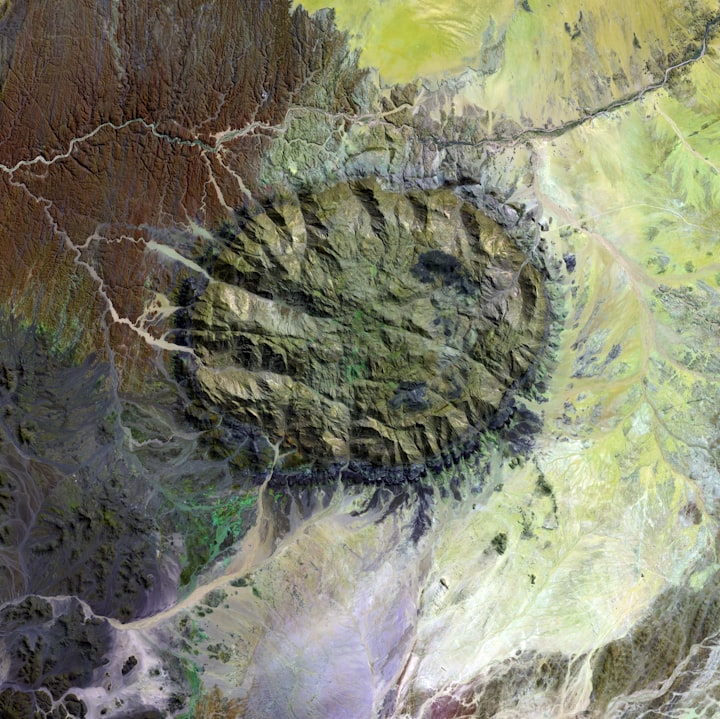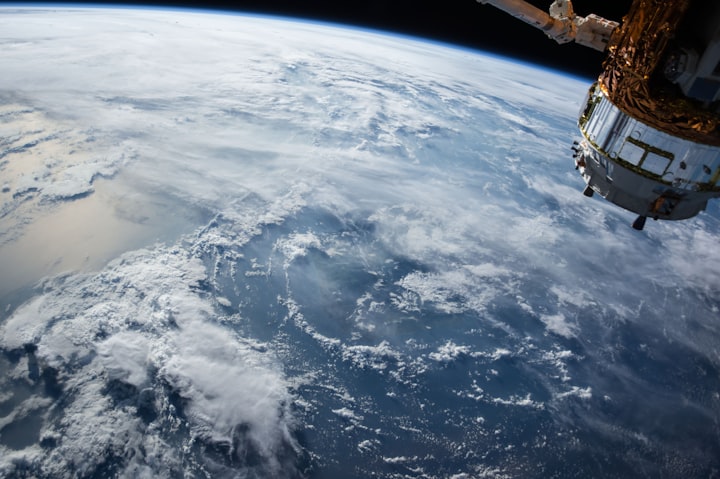The Earth's Fascinating Geography and Climate
The Impact of Geography and Climate on the Earth and Its Inhabitants
1.Introduction
The earth is a unique and diverse planet, with a wide range of landscapes, climates, and ecosystems. From the highest mountains to the deepest oceans, the earth is home to a staggering array of natural features and habitats.
One of the most striking aspects of the earth's geography is the variety of landforms found across the planet. These include towering mountain ranges, sprawling deserts, verdant forests, and rolling grasslands. Each of these landscapes has its own unique features and ecosystems, and is home to a diverse array of plant and animal life.
In addition to its diverse landforms, the earth also has a wide range of climates. From the hot, humid tropics to the icy polar regions, the earth's climate varies widely depending on location. These different climates are determined by a number of factors, including the earth's distance from the sun, the presence of oceans and mountains, and the earth's overall atmospheric conditions.
Overall, the earth's geography and climate play a vital role in shaping the planet's ecosystems and the life that it supports. From the animals and plants that call these diverse environments home, to the people who live in different parts of the world, the earth's geography and climate have a profound impact on the way we live and the world around us.
2. The earth's landforms
The earth's landforms are some of the most striking and diverse features of the planet. From the highest mountain peaks to the lowest valleys, these landforms shape the landscapes and habitats found across the globe. Some of the most common types of landforms found on the earth include:
Mountains: Mountains are some of the most iconic landforms on the earth. They are formed when tectonic plates collide, causing the earth's crust to be pushed up and folded. Mountains can be found on every continent and come in a wide range of shapes and sizes. Some of the most famous mountain ranges include the Himalayas, the Andes, and the Rocky Mountains.
Valleys: Valleys are low-lying areas of land that are surrounded by higher terrain. They are often formed by the erosion of mountains or other landforms over time. Valleys can be found in many different types of terrain, including mountain ranges and coastal areas.
Plateaus: Plateaus are flat or gently sloping areas of land that are higher than the surrounding terrain. They are often formed by the erosion of mountains or other landforms, or by the uplifting of the earth's crust. Plateaus can be found in a wide range of sizes and locations, from the vast Tibetan Plateau to smaller, local plateaus.
Plains: Plains are flat or gently rolling areas of land that are found in a wide range of locations, including along coasts, in valleys, and on the edges of mountain ranges. They are often characterized by their fertile soil and relatively mild climate.
Hills: Hills are small, rounded landforms that are lower than mountains but higher than the surrounding terrain. They are often formed by the erosion of mountains or other landforms over time.
These are just a few examples of the many different types of landforms found on the earth. Each of these landforms has its own unique features and characteristics, and plays a vital role in shaping the planet's landscapes and habitats.
3. The earth's oceans
The earth is home to five vast oceans, each with its own unique features and wildlife. These oceans are:
The Atlantic Ocean: The Atlantic Ocean is the second largest of the earth's oceans, covering an area of approximately 106 million square miles. It is bordered by the Americas to the west and Europe and Africa to the east. The Atlantic is home to a wide range of marine life, including whales, dolphins, sharks, and countless species of fish. It is also home to a number of island chains, including the Caribbean Islands and the Cape Verde Islands.
The Pacific Ocean: The Pacific Ocean is the largest of the earth's oceans, covering an area of approximately 63 million square miles. It is bordered by the Americas to the east and Asia and Australia to the west. The Pacific is home to some of the world's most famous island chains, including the Hawaiian Islands and the Philippines. It is also home to a diverse array of marine life, including whales, dolphins, and countless species of fish.
The Indian Ocean: The Indian Ocean is the third largest of the earth's oceans, covering an area of approximately 28 million square miles. It is bordered by Africa to the west, Asia to the north, and Australia to the east. The Indian Ocean is home to a wide range of marine life, including whales, dolphins, and countless species of fish. It is also home to a number of island chains, including the Maldives and the Seychelles.
The Southern Ocean: The Southern Ocean is the fourth largest of the earth's oceans, covering an area of approximately 20 million square miles. It surrounds Antarctica and is home to a wide range of marine life, including penguins, seals, and whales.
The Arctic Ocean: The Arctic Ocean is the smallest of the earth's oceans, covering an area of approximately 5.4 million square miles. It is located at the north pole and is surrounded by the continents of North America, Europe, and Asia. The Arctic Ocean is home to a wide range of marine life, including seals, walruses, and whales. It is also home to a number of island chains, including the Arctic Archipelago and the Svalbard Islands.
Each of these oceans has its own unique features and wildlife, and plays a vital role in shaping the earth's climate and weather patterns.
4. The earth's climate zones
The earth's climate varies widely depending on location, with different parts of the planet experiencing different temperatures and weather patterns. These differences are largely determined by the earth's distance from the sun, the presence of oceans and mountains, and the earth's overall atmospheric conditions. As a result, the earth is divided into several distinct climate zones, including:
Tropical regions: Tropical regions are found near the equator and are characterized by high temperatures and high humidity. These regions are home to a wide range of vegetation, including rainforests, savannas, and coral reefs.
Temperate regions: Temperate regions are found between the tropics and the polar regions and are characterized by moderate temperatures and a wide range of weather patterns. These regions are home to a variety of vegetation, including forests, grasslands, and agricultural lands.
Polar regions: Polar regions are found at the north and south poles and are characterized by extremely cold temperatures and a lack of sunlight for much of the year. These regions are home to a unique ecosystem, including polar deserts, tundra, and ice caps.
Each of these climate zones has its own unique features and characteristics, and is home to a wide range of plant and animal life. Understanding the earth's climate zones is important for understanding the planet's overall weather patterns and how they vary across the globe.
5. The earth's weather patterns
Weather patterns are the short-term atmospheric conditions that we experience from day to day. These patterns are formed by the movement of air masses around the earth, which is driven by the planet's rotation and the energy from the sun.
Weather patterns can vary widely depending on location, with different parts of the globe experiencing different temperatures, humidity levels, and types of precipitation. These variations are largely determined by the earth's climate zones, which are affected by the distance from the sun, the presence of oceans and mountains, and the earth's overall atmospheric conditions.
One of the main factors that drives the earth's weather patterns is the temperature difference between the equator and the poles. The equator receives more direct sunlight than the poles, and as a result, the air at the equator is warmer and less dense. This difference in temperature causes the air to rise at the equator and sink at the poles, creating a global system of air circulation known as the "Hadley cell."
As the air rises and cools at the equator, it forms clouds and precipitation. As it sinks and warms at the poles, it becomes dry and clear. This global circulation pattern drives the earth's weather patterns and helps to distribute heat and moisture around the planet.
There are many other factors that can affect the earth's weather patterns, including the presence of oceans, mountains, and other landforms. These features can help to moderate the climate and create local weather patterns that are unique to specific regions. Overall, the earth's weather patterns are complex and varied, and can change dramatically from one place to the next.
6. The earth's natural disasters
The earth is subject to a wide range of natural disasters, which are events that are caused by natural processes and can cause widespread damage and destruction. Some of the most common types of natural disasters include:
Earthquakes: Earthquakes are caused by the movement of tectonic plates deep beneath the earth's surface. When these plates shift, they can cause the ground to shake violently, causing damage to buildings and infrastructure. Earthquakes can be devastating, and can occur anywhere on the planet, although they are most common along the boundaries of tectonic plates.
Cyclones: Cyclones, also known as hurricanes or typhoons, are large, low-pressure systems that form over the oceans. They are characterized by strong winds and heavy rainfall, and can cause widespread damage when they make landfall. Cyclones are most common in tropical regions, and can be especially destructive in coastal areas.
Tornadoes: Tornadoes are large, destructive storms that form when warm, moist air collides with cold, dry air. They are characterized by strong winds and a distinctive funnel-shaped cloud, and can cause widespread damage when they touch down. Tornadoes are most common in the central and eastern United States, but can also occur in other parts of the world.
Floods: Floods are caused by heavy rainfall or the failure of a dam or levee. They can occur anywhere, but are most common in areas with low-lying terrain or poor drainage. Floods can cause widespread damage to buildings and infrastructure, and can be especially dangerous in areas with a high population density.
Wildfires: Wildfires are large, uncontrolled fires that are often caused by lightning or human activity. They can spread quickly, and can cause widespread damage to forests, grasslands, and other natural habitats. Wildfires are most common in dry, hot regions, but can occur anywhere where there is a sufficient fuel source.
These are just a few examples of the many different natural disasters that can occur on the earth. Each of these disasters can have a devastating impact on communities and ecosystems, and can be difficult to predict and prevent.
7. Conclusion
The earth is a diverse and fascinating planet, with a wide range of geography and climate that shapes the landscapes and habitats found across the globe. From the highest mountains to the deepest oceans, the earth is home to a staggering array of natural features and ecosystems.
The earth's geography and climate have a profound impact on the planet and its inhabitants. The earth's landforms, oceans, and climate zones all play a role in shaping the planet's ecosystems and the life that it supports. The earth's weather patterns, which are driven by the movement of air masses around the globe, also have a significant impact on the planet and its inhabitants.
However, the earth's geography and climate are not static, and can change over time due to a variety of factors. For example, the earth's climate is influenced by the amount of greenhouse gases in the atmosphere, which can trap heat and cause the planet's overall temperature to rise. Changes in the earth's climate can have a wide range of impacts, including more frequent natural disasters, shifts in the distribution of plant and animal life, and changes in the availability of natural resources.
Overall, the earth's geography and climate are complex and varied, and play a vital role in shaping the planet and the life it supports. Understanding these features and their impact on the earth is an important part of understanding the world around us.






Comments
There are no comments for this story
Be the first to respond and start the conversation.